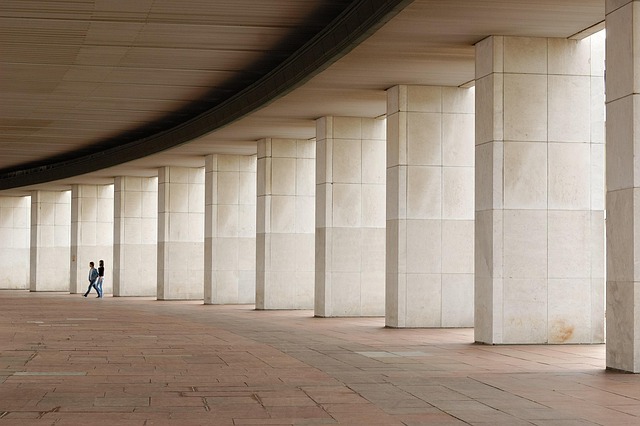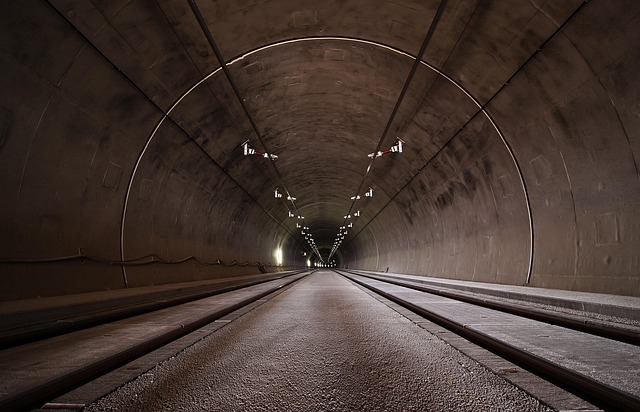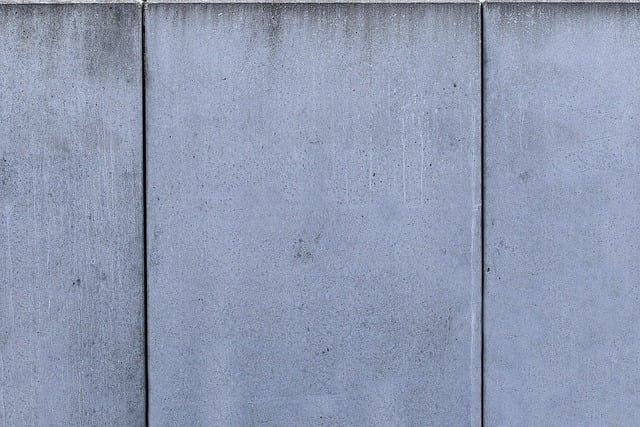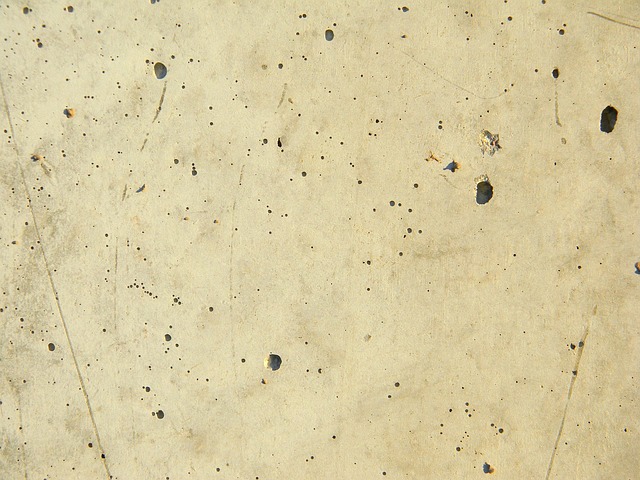Concrete foundations, crucial for structural stability, often face issues like cracks, spalls, and settlement over time. Prompt identification is key, as timely concrete repair prevents further damage. Visible surface cracks, uneven floors, stuck doors/windows, and bulging walls are signs of foundation problems caused by ground movement or poor initial construction. Regular inspections in regions with variable climates or unstable soils are essential for early detection. Modern concrete repair techniques include non-invasive methods like chemical injection and micro-excavation, which preserve existing structures. Chemical soil stabilization enhances soil strength and bearing capacity, while mechanical ground improvement techniques compact and strengthen challenging soils. Hydraulic lifting and leveling offer precise control over structure adjustment. Advanced methods like carbon fiber reinforcement and polymer injections stabilize and strengthen concrete, addressing structural weaknesses. Preventative measures during foundation construction, including regular inspections, maintenance, and proper drainage, are vital for long-term stability and integrity.
“Unstable foundations can lead to serious structural damage, but proactive stabilization techniques offer effective solutions. This comprehensive guide delves into the world of concrete repair, exploring common issues and signs of foundation instability. We dissect various causes behind movement, from soil types to climate.
Discover a range of stabilization methods, including non-invasive techniques like chemical soil stabilization and mechanical ground improvement. Learn about hydraulic lifting, structural support systems, and preventative measures to ensure long-lasting stability for your concrete foundations.”
Understanding Concrete Foundation Issues

Concrete foundations are a crucial component of any structure, providing stability and support. However, over time, various issues can arise, requiring careful attention and expert intervention. Understanding these common problems is the first step towards effective foundation stabilization. One of the primary concerns is concrete repair, addressing cracks, spalls, and settlement that may develop due to poor initial construction, shifting soil conditions, or extreme weather events.
Cracking, for instance, can be a sign of structural weakness or shrinkage, especially in older buildings. Spalled surfaces indicate areas where concrete has broken away, often due to corrosion or freeze-thaw cycles. Settlement issues might occur when the soil beneath the foundation compacts unevenly, leading to unevenness and potential structural damage. Prompt identification of these problems is key to implementing suitable stabilization techniques, ensuring the longevity and integrity of the structure.
Identifying Signs of Foundation Instability

Identifying signs of foundation instability is a crucial step in ensuring timely concrete repair. One of the most noticeable indicators is visible cracks on the surface, which can range from hairline fractures to larger, more pronounced gaps. These cracks may not only affect the aesthetics but also signal structural damage beneath. Other symptoms include uneven floors, doors or windows that stick or do not align properly, and bulging or shifting walls.
Foundation heave or settlement, caused by ground movement due to moisture changes or soil conditions, can lead to these issues. If left unaddressed, it could result in further damage, compromising the integrity of the building. Regular inspections, especially in regions with variable climates or unstable soils, are key to early detection. Prompt action through concrete repair methods can prevent more severe and costly structural problems down the line.
Common Causes of Foundation Movement

Foundation movement, a common issue in many structures, is primarily driven by several underlying factors. One of the primary causes is soil instability, where expansive clays or loose, compressible soils expand and contract with changes in moisture content, putting immense pressure on the foundation. This can lead to cracks in concrete walls and floors, indicative of potential concrete repair needs.
Another significant contributor is poor initial construction, including inadequate depth or reinforcement in the foundation. Over time, these structural weaknesses can allow for movement, resulting in uneven floors, door frames that do not align properly, and other signs of misalignment. Proper concrete repair techniques are crucial in addressing these issues, ensuring stability, and preventing further damage.
Non-Invasive Foundation Stabilization Methods

Non-invasive foundation stabilization methods offer a modern approach to concrete repair, focusing on preserving the existing structure while enhancing its integrity. Techniques such as chemical injection and micro-excavation are becoming increasingly popular alternatives to traditional, more destructive methods. Chemical injection involves introducing specialized polymers or fluids into the soil beneath the foundation, improving its capacity to bear load and preventing further settlement. This process is less disruptive than excavation and allows for quicker recovery without significant site disturbances.
Micro-excavation, on the other hand, utilizes precise machinery to remove small amounts of unstable soil around the foundation, replacing it with a stable material like sand or gravel. This method not only stabilizes the foundation but also improves drainage, mitigating potential moisture-related issues. These non-invasive techniques are particularly advantageous in urban settings where extensive excavation can be challenging and costly.
Chemical Soil Stabilization Techniques

Chemical soil stabilization techniques play a pivotal role in concrete repair and foundation stabilization. These methods involve introducing specialized chemicals into the soil to enhance its strength and bearing capacity, thereby providing a solid base for structures. By improving soil properties, such as increasing compactness and reducing water content, these techniques offer a long-lasting solution to prevent further damage caused by unstable foundations.
One commonly used chemical is cementitous material, which reacts with the existing soil to form a more robust, durable compound. This process effectively increases the soil’s resistance to erosion and its ability to support weight, making it ideal for repairing damaged concrete structures and stabilizing foundations in areas prone to settlement or shifting.
Mechanical Ground Improvement Solutions

Mechanical ground improvement techniques offer effective solutions for stabilizing foundations, especially in areas with challenging soil conditions. One of the most common methods is using vibratory rollers to compact loose soils, improving the bearing capacity beneath structures. This process is particularly useful for concrete repair and reinforcement, as it ensures a solid base for any new construction or renovation.
Additionally, mechanical solutions like pile driving and dynamic compaction employ specialized equipment to enhance soil strength. Pile driving involves driving steel piles into the ground to provide additional support, while dynamic compaction uses controlled explosions to densify soils, making them more stable for foundation work, including concrete repair projects that require enhanced structural integrity.
Hydraulic Lifting and Leveling Processes

Hydraulic lifting and leveling are advanced techniques employed in concrete repair, offering precise control over structure adjustment. This method utilizes high-pressure hydraulic systems to raise or lower specific sections of a foundation or building. By infusing liquid into pre-placed chambers, engineers can exert significant force, allowing for minute adjustments to ensure structural stability. The process is particularly beneficial for uneven surfaces, settling structures, or post-construction settlements, as it provides a non-invasive approach to realigning foundations without disturbing the surrounding area.
Effective concrete repair often relies on this technology, enabling professionals to restore balance and integrity to structures. It ensures that each section of the foundation is leveled evenly, preventing further damage or instability. Moreover, hydraulic lifting can be precisely calibrated for specific needs, making it a versatile solution for various structural challenges in both residential and commercial buildings.
Structural Support Systems for Foundations

Foundations are the backbone of any structure, and ensuring their stability is paramount for the longevity of a building. Structural support systems play a crucial role in reinforcing and protecting foundations from various environmental stresses and potential damage. One of the most common and effective methods is the implementation of concrete repair techniques. By repairing and strengthening existing concrete, engineers can mitigate cracks, settlement issues, and overall structural weakness.
Concrete repair involves several strategies such as patching, drilling and injecting resin, or complete replacement. These methods not only stabilize the foundation but also prevent further deterioration. Advanced technologies like carbon fiber reinforcement and polymer injections offer innovative solutions for complex foundation problems. Such techniques enhance the load-bearing capacity of concrete, ensuring the structural integrity of the entire building.
Preventative Measures for Long-Lasting Stability

To ensure long-lasting stability, implementing preventative measures during foundation construction is paramount. This includes utilizing high-quality materials and adhering to strict building codes and regulations. Concrete repair techniques should be employed proactively to address any signs of damage or settlement early on. Regular inspection and maintenance are key; scheduling periodic checks allows for quick identification of potential issues such as cracks, heaving, or shifting.
By maintaining a meticulous approach to foundation care, you can mitigate the need for costly repairs in the future. This involves keeping the area around the foundation free from debris and moisture, implementing proper drainage systems, and addressing any signs of water intrusion immediately. These preventative strategies not only extend the life of the structure but also ensure the stability and safety of the building over time.
